A Combined Gravity Compensation Method for INS Using the Simplified Gravity Model and Gravity Database
Abstract
:1. Introduction
2. Error Analysis of INS Solution Caused by Gravity Disturbance
2.1. Definition of Gravity Disturbance Vector
2.2. INS Error Equations Incorporated with Gravity Disturbance
3. The Principle of the Simplified Gravity Model
3.1. Expression of Spherical Harmonic Gravity Model (SHM)
3.2. The Selection of the Degree for the Simplified Gravity Model
4. The Principle and Procedure of the Data-Based Gravity Disturbance Compensation Method for INS Using ELM
4.1. The Principle of ELM
- (1)
- Only the predefined network structure needs to be modulated;
- (2)
- ELM has the ability to do fast learning;
- (3)
- High generalization performance can be achieved through ELM;
- (4)
- A wide selection range of activation functions can be used in ELM.
4.2. The Procedure of the Data-Based Gravity Disturbance Compensation Method in INS Using ELM
- Obtain the motion carrier’s position. Get the position information (λ, L) of the motion carrier through the INS calculation.
- Choose the gravity data base. Find the suitable gravity data base taking the position obtained by step 1 as the center. Normally, 5′ × 5′ gravity grid data base is chosen as the training database.
- ELM training. Set the motion carrier’s position information (λ, L) as the inputs of the network and acquire the gravity disturbance on geoid () through training the gravity data base acquired by step 2.
- Upward continuation. Calculate the gravity disturbance with upward continuation to the point where INS is. The height of INS is acquired through altimeter. In the geographic engineering application, the most practical upward continuation method is free air correction. The computational equation is described as follows [26]:where is the gravity disturbance where the motion carrier is and is the gravity disturbance on the geoid. The units of and are milligal. H is the height between the geoid and the motion carrier. The unit of H is meter.
5. The Framework of the Combined Gravity Compensation Method for INS
- Obtain the motion carrier’s position. Get the position information of the motion carrier through the INS calculation.
- Calculate the gravity and the gravity disturbance. Based on the position information from step 1, the gravity g and the gravity disturbance are obtained respectively through the simplified gravity model and ELM training.
- Compensate the gravity and the gravity disturbance from step 2 into INS equations, considering the gravity disturbance to restrain the error propagation.
6. Experiment
7. Conclusions
Author Contributions
Funding
Acknowledgments
Conflicts of Interest
References
- Titterton, D.H.; Weston, J.L. Strapdown Inertial Navigation Technology, 2nd ed.; Institution of Engineering and Technology: Stevenage, UK, 2004; pp. 25–30. ISBN 9780863413582. [Google Scholar]
- Zhou, X.; Yang, G.L.; Cai, Q.Z.; Wang, J. A novel gravity compensation method for high precision free-INS based on Extreme Learning Machine. Sensors 2016, 16, 2019. [Google Scholar] [CrossRef] [PubMed]
- Kwon, J.H. Gravity Compensation Methods for Precision INS. In Proceedings of the 60th Annual Meeting of the Institute of Navigation, Dayton, OH, USA, 7–9 June 2014; pp. 483–490. [Google Scholar]
- Jekeli, C. Precision free-inertial navigation with gravity compensation by an onboard gradiometer. J. Guid. Control Dyn. 2006, 29, 704–713. [Google Scholar] [CrossRef]
- Mandour, I.M.; EI-Dakiky, M.M. Inertial Navigation System Synthesis Approach and Gravity-Induced Error Sensitivity. IEEE Trans. Aerosp. Electron. Syst. 1988, 24, 40–50. [Google Scholar] [CrossRef]
- Siouris, G.M. Gravity modeling in aerospace applications. Aerosp. Sci. Technol. 2009, 13, 301–315. [Google Scholar] [CrossRef]
- Wang, J.; Yang, G.; Li, J.; Zhou, X. An Online Gravity Modeling Method Applied for High Precision Free-INS. Sensors 2016, 16, 1541. [Google Scholar] [CrossRef] [PubMed]
- Arora, N.; Russell, R.P. Fast efficient and adaptive interpolation of the geopotential. In Proceedings of the AAS/AIAA Astrodynamics Specialist Conference, Girdwood, AK, USA, 31 July–4 August 2011. [Google Scholar]
- Sarzeaud, O.M.; Rouxel, D. Optimal Interpolation of Gravity Maps Using a Modified Neural Network. Int. Assoc. Math. Geosci. 2009, 41, 379–395. [Google Scholar] [CrossRef]
- Zhao, Y.F.; Ren, X.H. CNC Thermal Compensation Based on Mind Evolutionary Algorithm Optimized BP Neural Network. World J. Eng. Technol. 2016, 4, 38–44. [Google Scholar] [CrossRef]
- Chen, Y.S.; Yan, S. Mind-Evolution-Based Machine Learning Framework and the Implementation of Optimization. In Proceedings of the IEEE International Conference on Intelligent Engineering Systems, Vienna, Austria, 17–19 September 1998; pp. 355–359. [Google Scholar]
- Hang, L. Methods of Statistical Learning; Tsinghua University Press: Beijing, China, 2012; ISBN 978-7-302-27595-4. [Google Scholar]
- Wellenhof, B.H.; Moritz, H. Physical Geodesy, 2nd ed.; Springer: Vienna, Austria, 2006; ISBN 9783211335444. [Google Scholar]
- Lu, Z.L. The Theory and Method of the Earth Gravity Field; Liberation Army Press: Beijing, China, 1996; ISBN 7-5065-3033-3. [Google Scholar]
- Hofmann-Wellenhof, B.; Moritz, H. Physical Geodesy; Springer: Berlin, Germany, 2006; ISBN 3211335447. [Google Scholar]
- Jordan, S.K. Effects of geodetic uncertainties on a damped inertial navigation system. IEEE Trans. Aerosp. Electron. Syst. 1973, 741–752. [Google Scholar] [CrossRef]
- Vanderwerf, K. Schuler pumping of inertial velocity errors due to gravity anomalies along a popular North Pacific airway. In Proceedings of the IEEE Position Location and Navigation Symposium, Atlanta, GA, USA, 22–25 April 1996; pp. 642–648. [Google Scholar]
- Levine, S.A.; Gelb, A. Effect of reflections of the vertical on the performance of a terrestrial inertial navigation system. J. Spacecr. Rocket. 1969, 6, 978–984. [Google Scholar] [CrossRef]
- Leonard, J.M.; Nievinski, F.G.; Born, G.H. Gravity error compensation using second-order Gauss-Markov processes. J. Spacecr. Rocket. 2013, 50, 217–229. [Google Scholar] [CrossRef]
- Hirt, C.; Marti, U.; Bürki, B. Assessment of EGM2008 in Europe using accurate astrogeodetic vertical deflections and omission error estimates from SRTM/DTM2006.0 residual terrain model data. J. Geophys. Res. 2010, 115. [Google Scholar] [CrossRef]
- Fu, G.Y.; Zhu, Y.Q.; Gao, S.H.; Liang, W.; Jin, H.; Yang, G.; Zhou, X.; Guo, S.; Xu, Y.; Du, W. Discrepancies between free air gravity anomalies from EGM2008 and the ones from dense gravity/GPS observations at west Sichuan Basin. Chin. J. Geophys. 2013, 56, 3761–3769. [Google Scholar] [CrossRef]
- Abeyratne, P.G.V.; Featherstone, W.E.; Tantrigoda, D.A. Assessment of EGM2008 over Sri Lanka, an area where “fill-in” data were used in EGM2008. Newtons Bull. 2009, 4, 284–316. [Google Scholar]
- Dawod, G.; Mohamed, H.; Ismail, S. Evaluation and adaptation of the EGM2008 geopotential model along the Northern Nile Valley, Egypt: Case study. J. Surv. Eng. 2009, 136, 36–40. [Google Scholar] [CrossRef]
- Cho, D.; Ham, J.; Oh, J.; Park, J.; Kim, S.; Lee, N.K.; Lee, B. Detection of Stress Levels from Biosignals Measured in Virtual Reality Environments Using a Kernel-Based Extreme Learning Machine. Sensors 2017, 17, 2435. [Google Scholar] [CrossRef] [PubMed]
- Khosravi, V.; Ardejani, F.D.; Yousefi, S. Monitoring soil lead and zinc contents via combination of spectroscopy with extreme learning machine and other data mining methods. Geoderma 2018, 318, 29–41. [Google Scholar] [CrossRef]
- Jekeli, C.; Lee, J.K.; Kwon, J.H. Modeling errors in upward continuation for INS gravity compensation. J. Geod. 2007, 81, 297–309. [Google Scholar] [CrossRef]
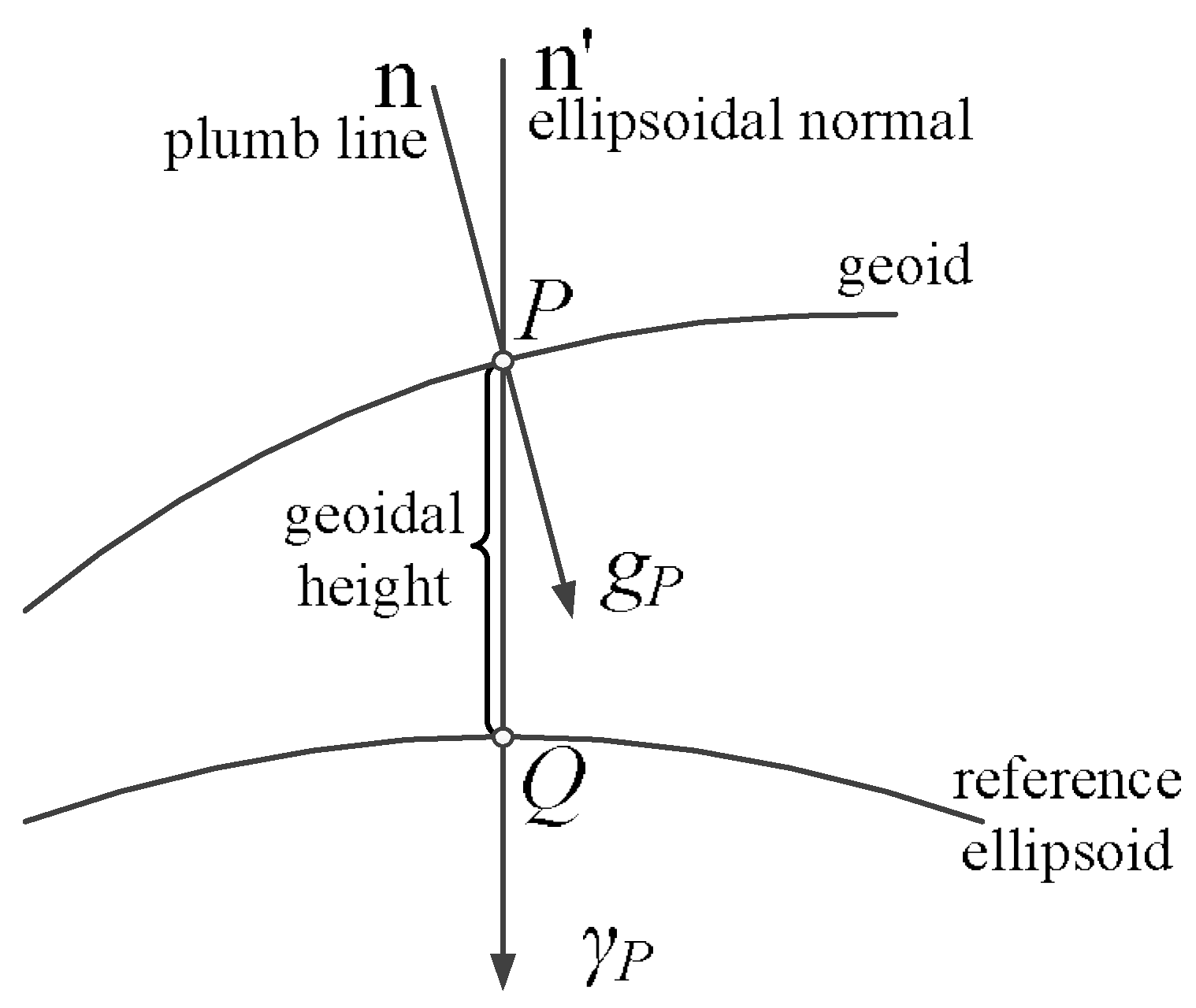
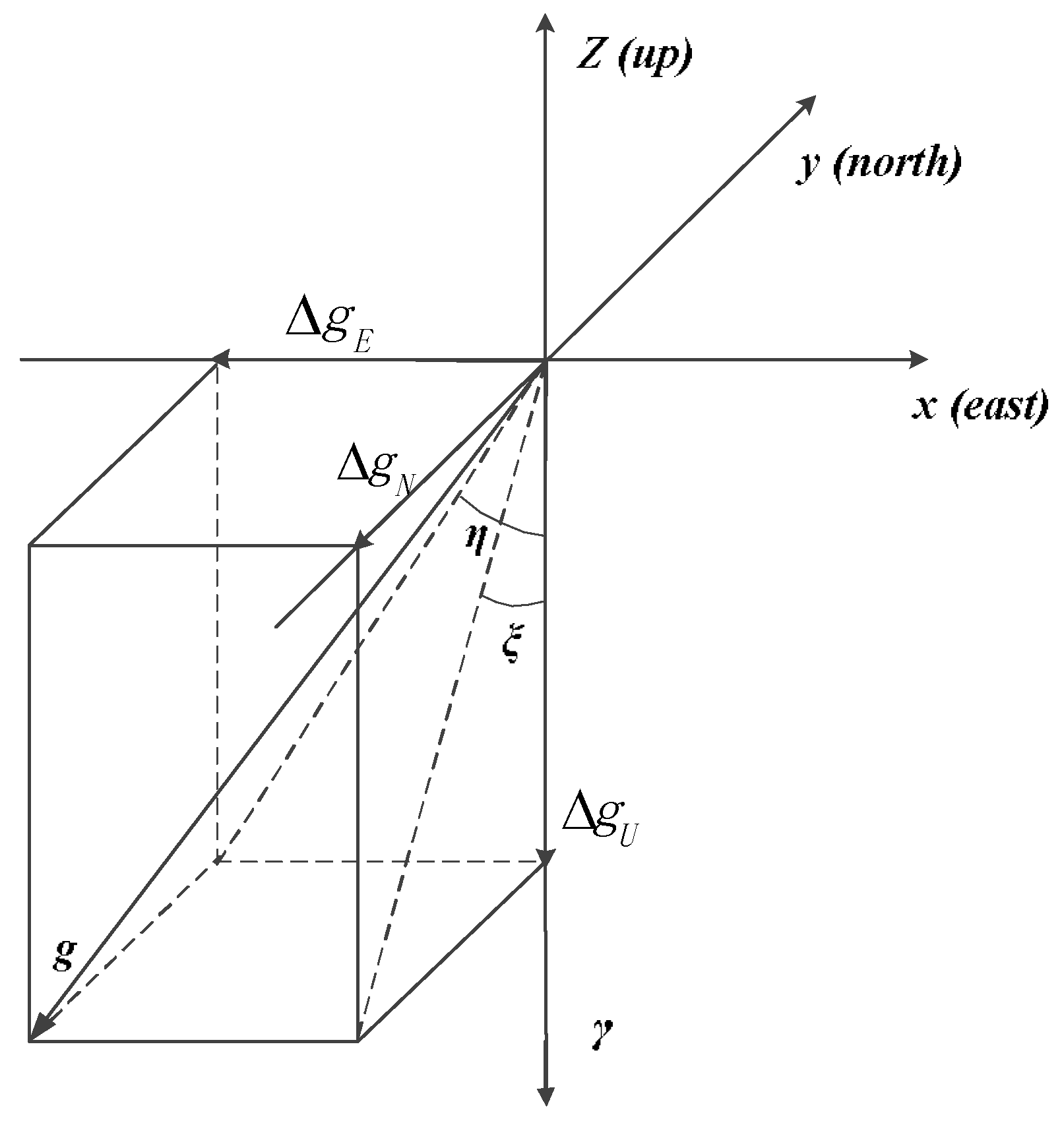
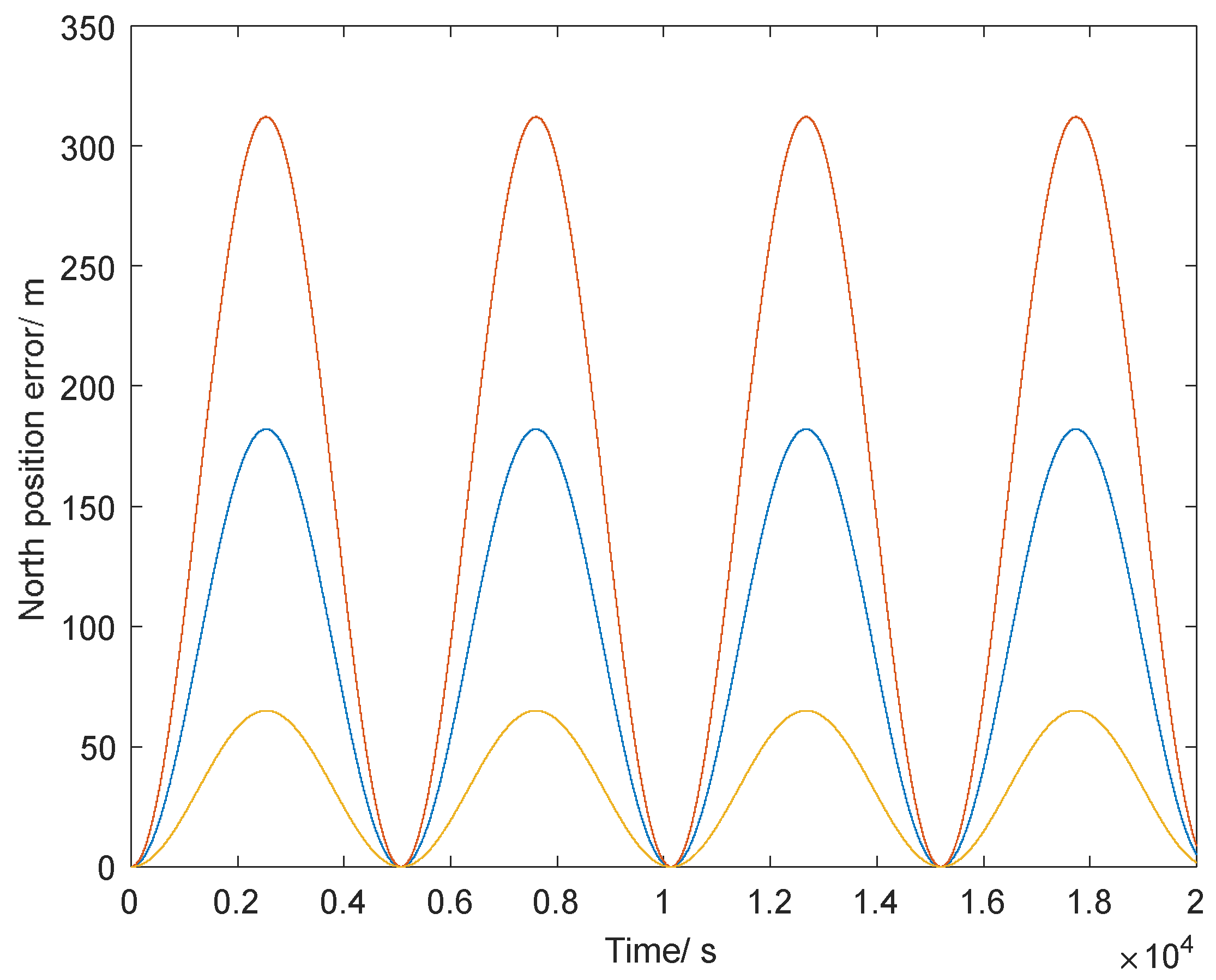

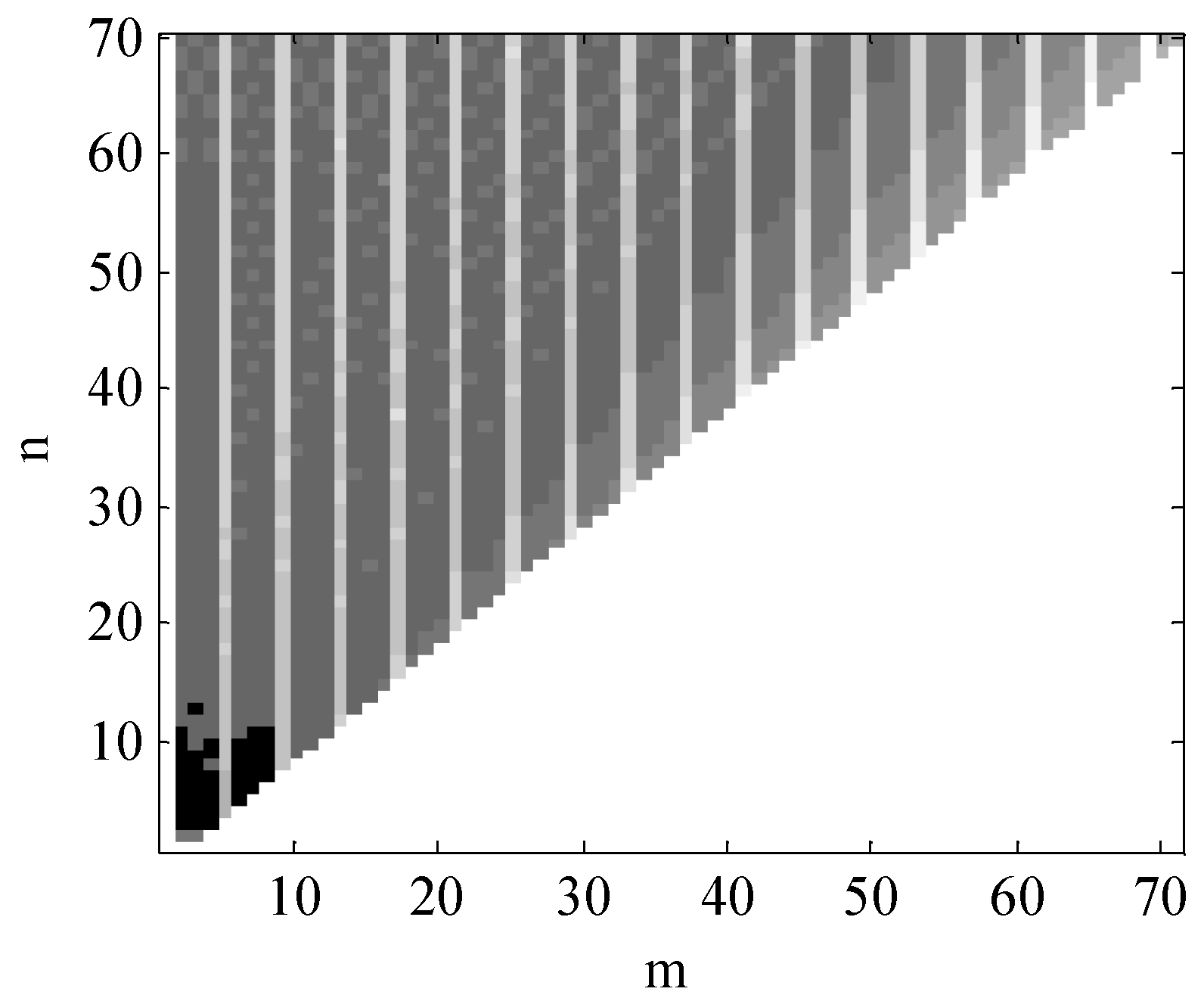
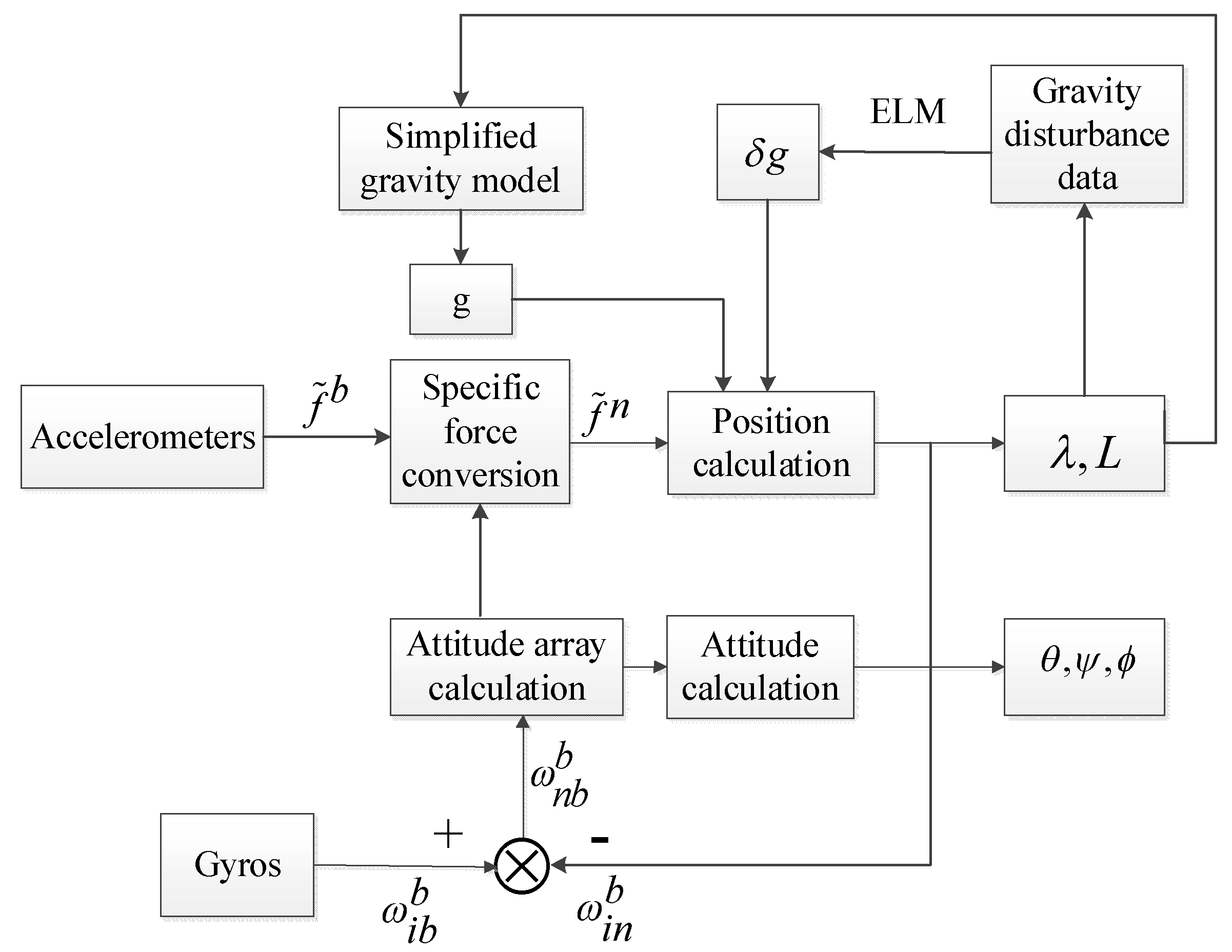

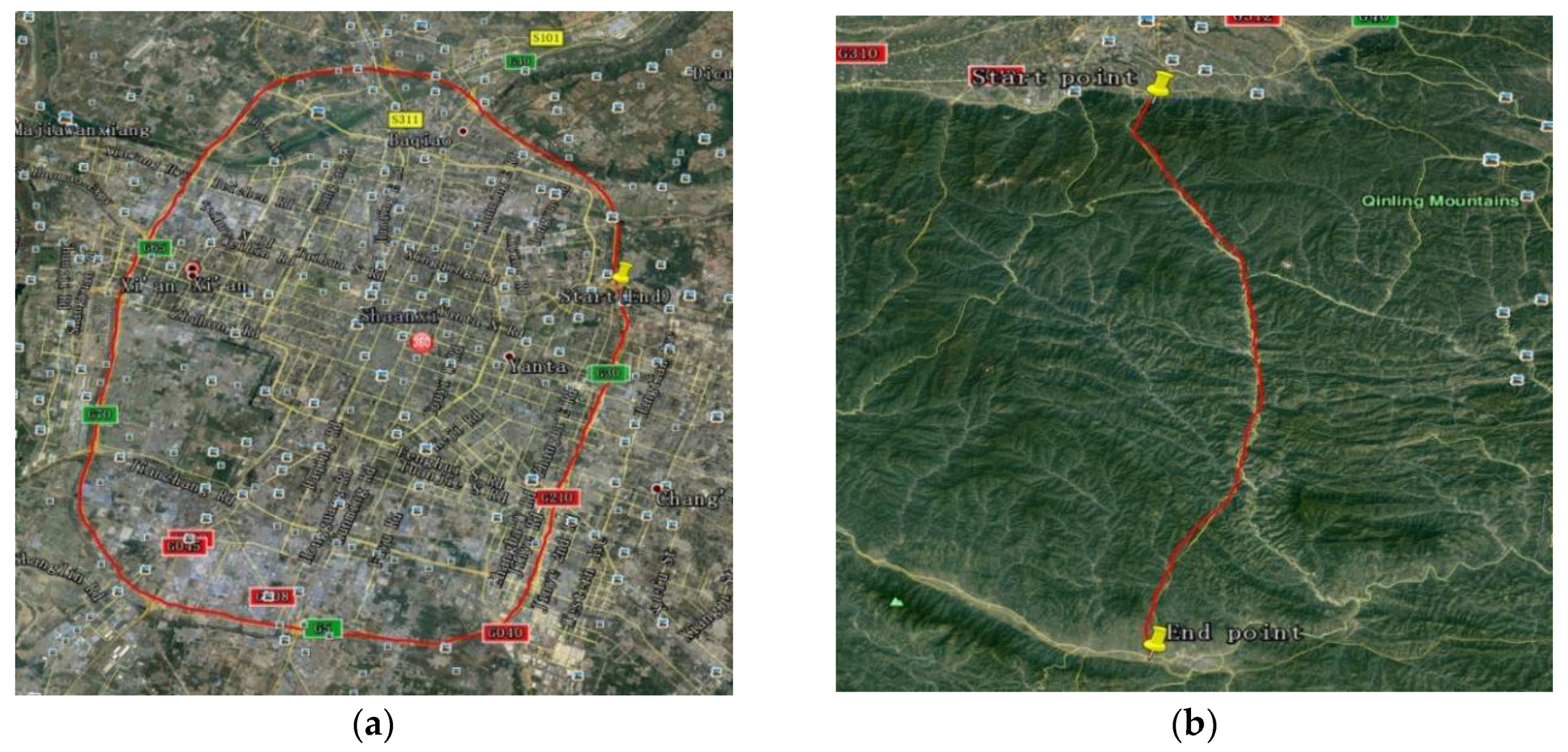

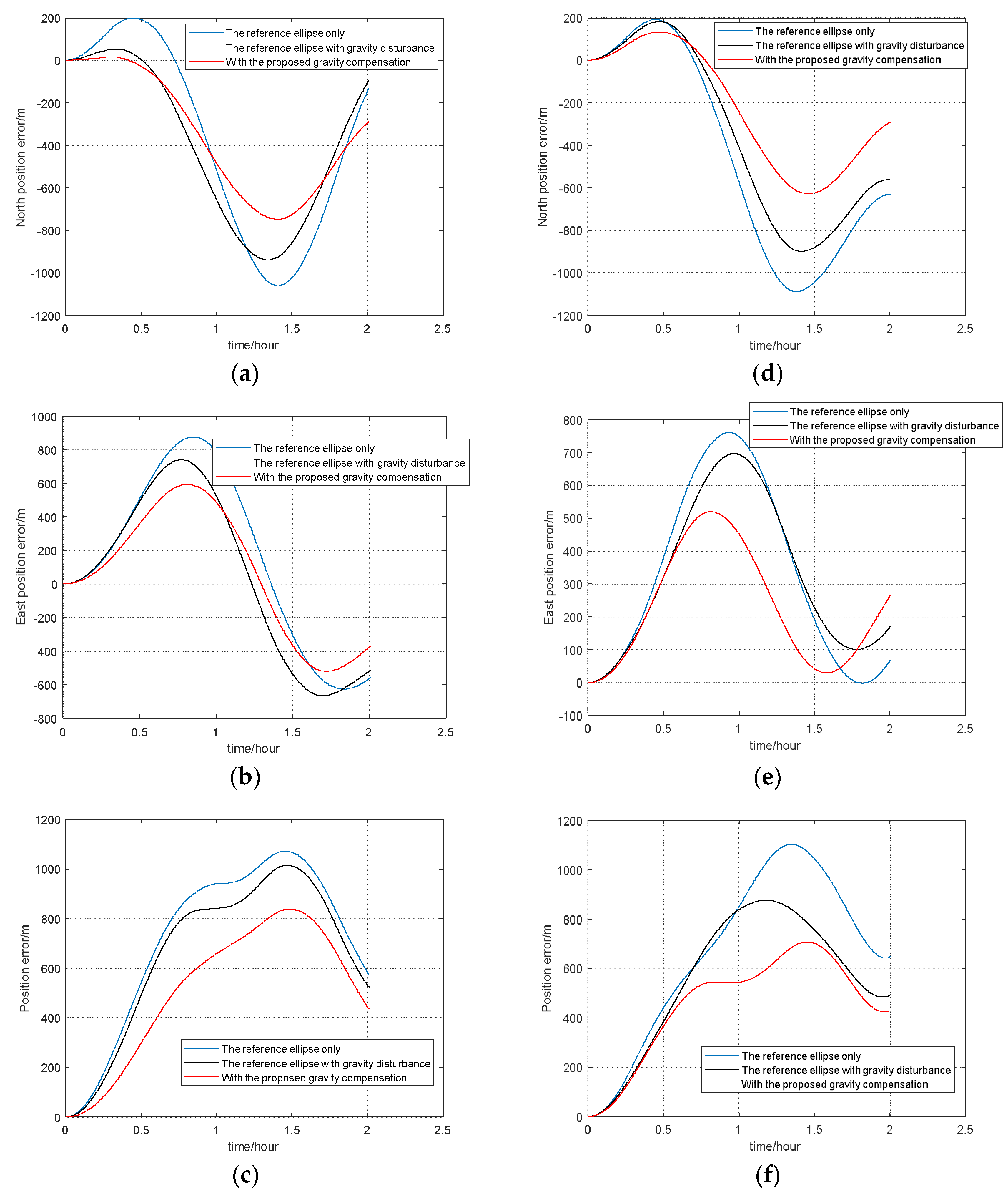
| (m Gal *) | 5 | 14 | 24 |
| North position error (m) | 62 | 185 | 309 |
| Sensors Types | Characteristics | Magnitude (1 σ) |
|---|---|---|
| Gyroscope | Constant Bias | 0.003°/h |
| Accelerometer | Constant Bias | 10 μg |
| GPS velocity | Horizontal error | 0.03 m/s |
| Height error | 0.05 m/s | |
| GPS position | Horizontal error | 2 m |
| Height error | 5 m |
| The Reference Ellipse Only | The Reference Ellipse with DOVs | With the Proposed Gravity Compensation | Position Improvement (Compared with the Reference Ellipse Only) | |
|---|---|---|---|---|
| Test 1 | 1050 | 1012 | 837 | 213(20%) |
| Test 2 | 1120 | 876 | 689 | 431(38%) |
© 2018 by the authors. Licensee MDPI, Basel, Switzerland. This article is an open access article distributed under the terms and conditions of the Creative Commons Attribution (CC BY) license (http://creativecommons.org/licenses/by/4.0/).
Share and Cite
Zhou, X.; Yang, G.; Wang, J.; Wen, Z. A Combined Gravity Compensation Method for INS Using the Simplified Gravity Model and Gravity Database. Sensors 2018, 18, 1552. https://doi.org/10.3390/s18051552
Zhou X, Yang G, Wang J, Wen Z. A Combined Gravity Compensation Method for INS Using the Simplified Gravity Model and Gravity Database. Sensors. 2018; 18(5):1552. https://doi.org/10.3390/s18051552
Chicago/Turabian StyleZhou, Xiao, Gongliu Yang, Jing Wang, and Zeyang Wen. 2018. "A Combined Gravity Compensation Method for INS Using the Simplified Gravity Model and Gravity Database" Sensors 18, no. 5: 1552. https://doi.org/10.3390/s18051552




